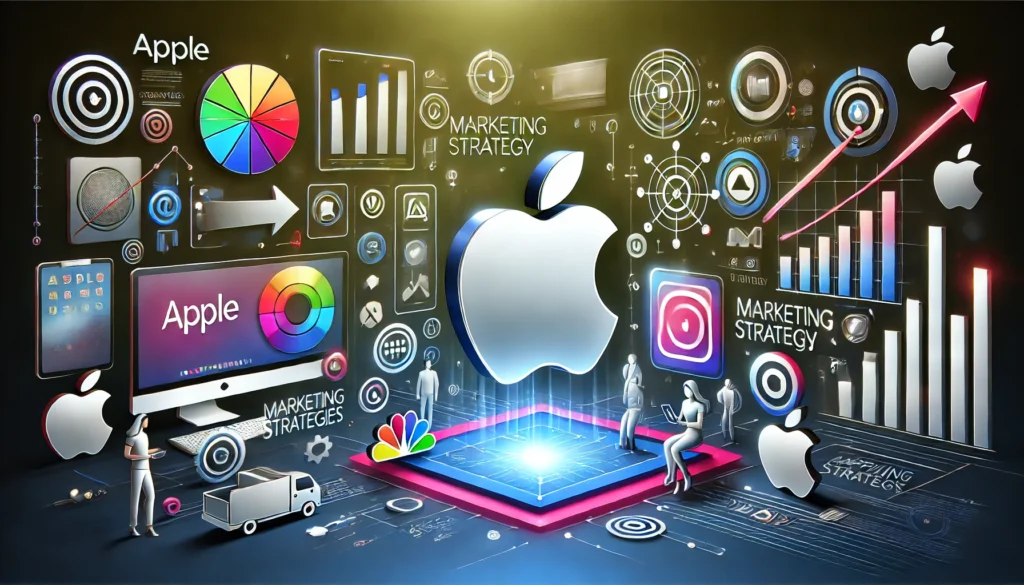Introduction: Apple Marketing Case Study
Apple is a brand synonymous with innovation, sleek design, and unmatched customer loyalty. But what’s the secret sauce behind its marketing strategy? In this Apple company case study, we’ll explore how Apple consistently wins in the competitive market. Whether you’re a marketing professional, business owner, or student, Apple’s strategy holds valuable lessons for all.
The Power of Simplicity:
One of Apple’s key marketing strategies is simplicity. Apple doesn’t bombard its customers with complicated messages. Instead, the company focuses on clear, direct communication. A minimalist approach can be seen in everything from their product design to their advertising campaigns. This strategy resonates strongly in today’s fast-paced world, where consumers crave straightforward solutions.
Key Takeaway: A simple and consistent message is powerful. Less is often more in marketing.
Strong Brand Identity:
Apple has built a brand identity that resonates with consumers worldwide. From the logo to the packaging and store design, every touchpoint screams ‘Apple.’ This level of brand consistency helps consumers identify with the brand and builds trust over time.
Apple’s brand is not just about products; it’s about lifestyle. It positions itself as a premium brand, appealing to individuals who seek luxury, exclusivity, and cutting-edge technology.
Key Takeaway: Building a strong and consistent brand identity can transform a company from just another business into a cultural icon.
Creating a Sense of Exclusivity:
Apple’s marketing strategy creates a sense of exclusivity, which fuels the demand for their products. The company often limits product supply during launches, which builds excitement and urgency among consumers. This scarcity tactic makes customers feel like they are part of an exclusive club.
Key Takeaway: Create a sense of exclusivity to drive demand and brand loyalty.
Storytelling in Marketing:
Apple uses storytelling to connect with its audience emotionally. Rather than just focusing on product features, Apple tells stories about how its products can change lives. Whether it’s through their captivating commercials or product launch events, Apple excels at making the consumer the hero of the story.
For example, the “Shot on iPhone” campaign doesn’t just showcase the camera’s features but emphasizes the everyday magic that users can capture with an iPhone. This narrative-driven marketing strikes an emotional chord, driving engagement and sales.
Key Takeaway: Focus on storytelling that connects your brand to real-life experiences.
Mastering Product Launches:
Apple’s product launch events are legendary. Each launch is more than just an unveiling of a new gadget; it’s a global event that generates massive media coverage and public attention. The build-up to these events is carefully orchestrated, creating buzz months before the actual release.
Apple teases new products with well-crafted campaigns that offer just enough information to spark curiosity. This anticipation keeps Apple fans and the media engaged, ensuring that the launch becomes the talk of the town.
Key Takeaway: Plan your product launches carefully, build anticipation, and ensure media coverage to maximize impact.
Emotional Appeal Over Technical Specs:
While other tech companies often compete over specifications and technical features, Apple appeals to the emotions of its consumers. Apple’s ads don’t drown the audience in technical jargon. Instead, they focus on how the product fits into consumers’ lives and makes them feel more empowered, creative, or connected.
Key Takeaway: Market your products by highlighting the emotional benefits they bring to customers, not just the technical aspects.
Leveraging the Power of Customer Loyalty:
Apple’s marketing strategy is also rooted in maintaining strong customer loyalty. Apple’s customer base is known for its fierce loyalty, and the company nurtures this by delivering exceptional customer experiences. Whether it’s through seamless integration across devices, dedicated customer service, or exclusive perks, Apple ensures its customers keep coming back.
Apple’s loyalty program is its ecosystem. Once a customer buys into the Apple ecosystem (iPhone, Mac, iPad, Apple Watch), it becomes harder to switch to a competitor due to the ease of integration between Apple products.
Key Takeaway: Build a brand ecosystem that keeps customers loyal and coming back for more.
Creating Value Through Premium Pricing:
Apple’s marketing strategy also involves premium pricing. While many competitors lower prices to attract customers, Apple does the opposite. It positions itself as a premium brand with products that command higher prices. This pricing strategy not only elevates the perception of its products but also allows Apple to maintain high-profit margins.
Consumers associate high prices with higher value, and Apple successfully reinforces this by delivering products that meet their premium standards.
Key Takeaway: Position your products as premium offerings to elevate their perceived value.
Conclusion: Apple Marketing Case Study
Apple’s marketing strategy is a masterclass in building a brand that resonates emotionally with consumers while maintaining a premium image. By focusing on simplicity, exclusivity, storytelling, and customer loyalty, Apple consistently outshines competitors. Whether you’re a startup founder or a seasoned marketing professional, there’s much to learn from the Apple company case study.
Apple shows that successful marketing isn’t just about the product but about the story and value you create around it. With these principles, your brand too can find a winning edge in the competitive marketing world.




Wow, marvelous weblog structure! How lengthy have you ever been running a blog for? you make blogging look easy. The total look of your website is great, as smartly as the content material!
Thank you so much for the kind words! I’m thrilled to hear you like the design and content. It’s been a wonderful journey running this blog, and I’m glad it resonates with you. I always aim to make blogging both informative and enjoyable. Your feedback means a lot, and I’ll continue working hard to keep both the structure and content top-notch. Feel free to explore more, and don’t hesitate to reach out if you have any questions or suggestions!